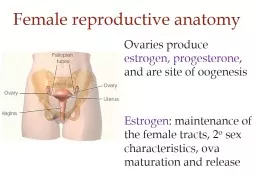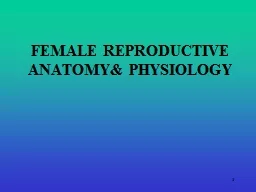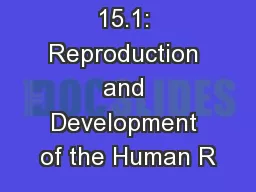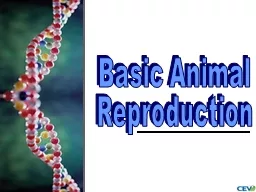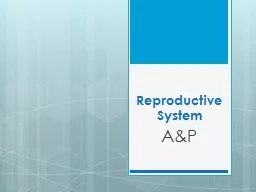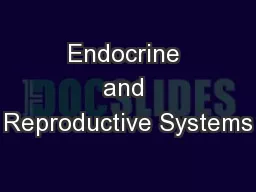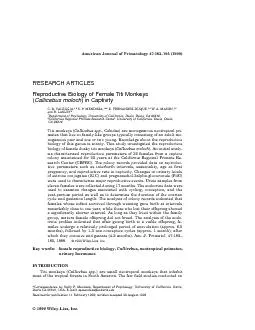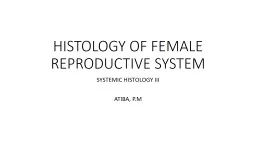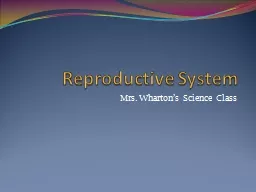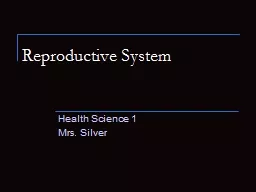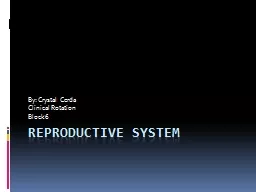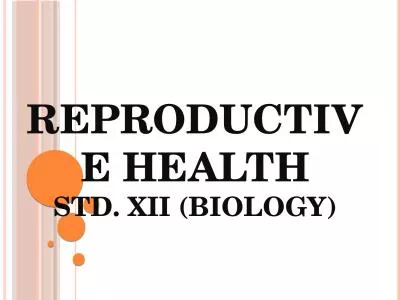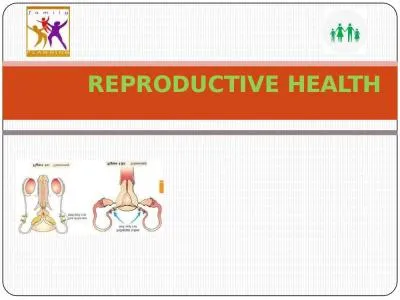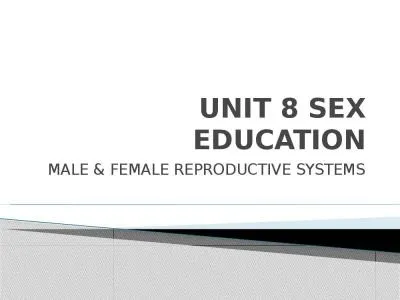PPT-Female reproductive anatomy
Author : yoshiko-marsland | Published Date : 2017-03-18
Ovaries produce estrogen progesterone and are site of oogenesis Estrogen maintenance of the female tracts 2 o sex characteristics ova maturation and release Oogonia
Presentation Embed Code
Download Presentation
Download Presentation The PPT/PDF document "Female reproductive anatomy" is the property of its rightful owner. Permission is granted to download and print the materials on this website for personal, non-commercial use only, and to display it on your personal computer provided you do not modify the materials and that you retain all copyright notices contained in the materials. By downloading content from our website, you accept the terms of this agreement.
Female reproductive anatomy: Transcript
Download Rules Of Document
"Female reproductive anatomy"The content belongs to its owner. You may download and print it for personal use, without modification, and keep all copyright notices. By downloading, you agree to these terms.
Related Documents

